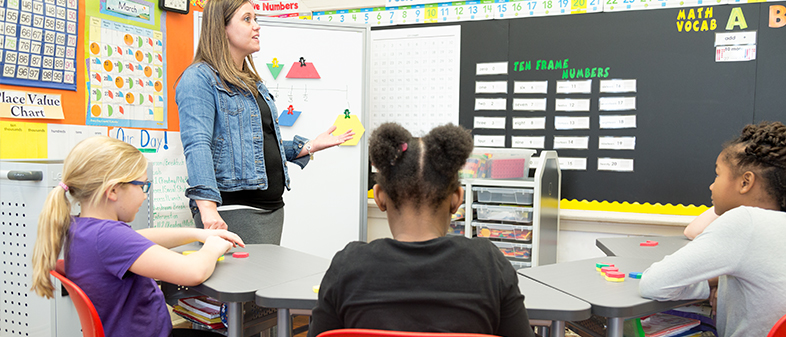
It's safe to say that most people want their homes to feel welcoming; to be vibrant, functional and yet comfortable. After all, look at the plethora of ever-popular home improvement shows on HGTV - these portray just how important a home's look and feel is to a person's overall well-being.
Why, then, don't most people realize just how crucial a school's look and feel is to a student's well-being? (And by extension, academic success?) During the year, students spend far more waking hours in the classroom than at home, and are in the critical stages of development both mentally and physically.
What's long been suspected by educators has finally been proven by experts: students literally feel the difference between a good environment and a bad one. A 2015 study conducted by the University of Salford in the UK looked at 153 classrooms in 27 schools and found that a room's physical characteristics are crucial to a student's academic success. It discovered that the most effective learning spaces foster 65 percent more progress in reading, writing, and mathematics than the least effective - an enormous advantage worth trying to achieve for all students.
The study revealed that students feel the difference of an environment in several ways. One is physical: their bodies respond positively or negatively to a room's light, temperature, air quality and sound. For instance: A too-hot room can lead to difficulty concentrating, which can worsen test scores. Too much carbon dioxide in the air from poor ventilation can cause confusion or nausea, while lack of natural light can disconnect students from circadian rhythms and leave them sleepy.
A classroom's physical space can elicit emotional responses as well. According to the research, too many bright colors in a room can overwhelm students, just as a bland environment can bore them. Students' ability to personalize their space or adjust furniture and equipment for more collaborative work increases their feelings of responsibility and empowerment. This can enable them to become self-directed and lifelong learners.
Furthermore, well-designed environments can have big cultural implications for a school. Like a great football team or an award-winning debate club, environments done right are a real source of pride for students and can be a tangible expression of a school's values. Administrators can use new environments to signal positive changes in a school's culture and rally everyone behind a common vision.
At School Outfitters, we spend a lot of our time collecting feedback from both students and teachers on product developments. We integrate as much of that feedback as we can into building custom, effective learning environments for our schools - we see the differences show up on kid's faces.
When I go to the grand openings of schools that have been through the design and project process with School Outfitters, I like to watch students react to their new spaces. I will often meet a student smiling at their new surroundings and say to them: "We did this because you're worth the investment." My favorite answer to date came from a student at El Capitan High School in Merced, California, who said to me with an even broader smile: "Yes, I am!" Wouldn't it be great if all our kids could feel that confident?


